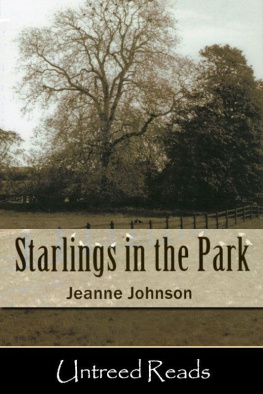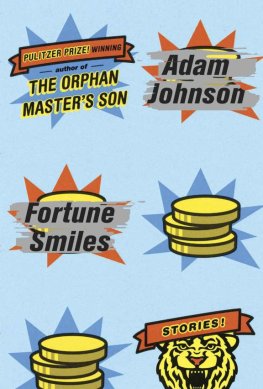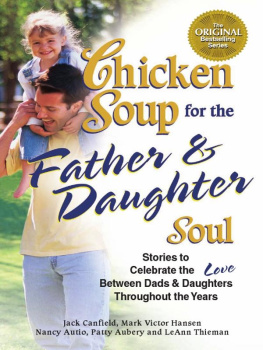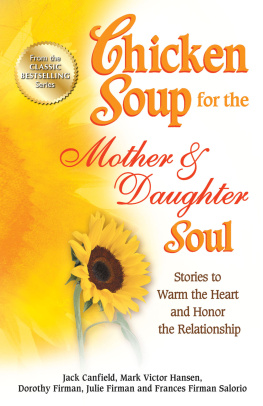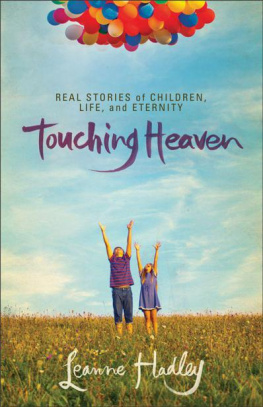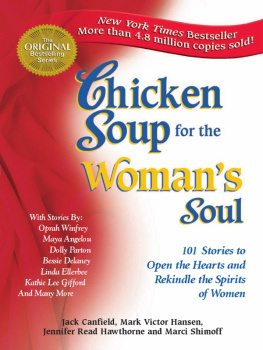
Table of Contents
Starlings in the Park
By Jeanne Johnson
Copyright 2012 by Jeanne Johnson
Cover Copyright 2012 by Ginny Glass and Untreed Reads Publishing
The author is hereby established as the sole holder of the copyright. Either the publisher (Untreed Reads) or author may enforce copyrights to the fullest extent.
This ebook is licensed for your personal enjoyment only. This ebook may not be resold, reproduced or transmitted by any means in any form or given away to other people without specific permission from the author and/or publisher. If you would like to share this book with another person, please purchase an additional copy for each person you share it with. If youre reading this book and did not purchase it, or it was not purchased for your use only, then please return to your ebook retailer and purchase your own copy. Thank you for respecting the hard work of this author.
This is a work of fiction. Any resemblance to the living or dead is entirely coincidental.
http://www.untreedreads.com
Starlings in the Park
By Jeanne Johnson
For all who have shared with me their stories of hardship and hope.
Foreword
This is a book of intimate revelations, a journey into the hearts, minds and imaginations of children and adults, couples and single people of all ages. Regardless of the differences in their outer lives, in all of these individuals we find the common threads of human feeling. Fear, anger, sadness, loneliness and inner conflicts live alongside courage, creativity, strength and hope. Darkness gives birth to light. Tragedy brings out inner strength.
Jeanne Johnson has crafted stories that speak to what is most human in us. Her deep understanding of human needs and wants shines through in every page. Yet as universal as her themes are, the people she writes about are unique. Jeanne captures the moment, the special ingredients that mark her characters as one of a kind. She allows them to engage us and bring us into their everyday lives. As we enter the world they inhabit, we discover that we are not so different after all. Looking beyond the surface of gender, age, and life situations, we see into the hearts of children and adults who are valiantly living through the questions life asks of them.
The portraits of children between ages three and ten are especially poignant. Jeanne delves deeply into the sense of loneliness and isolation that are often part of those early years. And yet their innate strength and imagination come through as well. The story of an adolescent girl struggling to free herself from sexual abuse is unforgettable. Men and women caught in loveless marriages are portrayed with sensitivity and compassion. Single people and their dilemmas are portrayed with warmth and understanding.
Starlings in the Park is filled with inspiration and hope. It honors the hearts of humans embracing their individual journeys. You will want to read it more than once. And you will want to share it with others.
Lucia Capacchione, Ph.D.
Author of Recovery of Your Inner Child and The Creative Journal
Introduction
I have always been a listener and observer, behaviors which developed from an early childhood need to cope with my fathers unpredictable moods. By constant watching and listening I found I could anticipate his impending displeasure. And to protect myself from his anger and disapproval I learned the value of being vigilant, staying still and keeping my mouth shut.
I carried these traits through my teenage years as a kind of security blanket. As a working class scholarship girl at a middle class school, I watched and listened to my teachers and peers in order to learn what was expected of me. Then, in my effort to fit in, I mimicked the behaviors of those I observed. And I must have done so with some success, for I always had friends, and, despite my diminutive stature, was never last to be chosen for the netball and hockey teams. Yet inside I always felt an outsider.
As I grew older, I continued to feel an outsider. Few people would have guessed. My skill in constantly taking note of what was going on around me meant I was always able to blend in. I gave the impression of being a rather quiet, shy young woman, but inside my calm exterior lived a lively, curious mind, absorbing and processing what I saw and heard of the lives of those around me. Id always been an avid reader, and now, in my search to learn more about human behavior, and where I fitted in the wider picture, I began to devour the works of Charles Dickens, Thomas Hardy, D. H. Lawrence, Jane Austen, and other great literary observers. And what had begun as an act of survival, became a fascination.
By my late twenties I was mother to three young children. Watching and listening to their interactions as they chattered and played, made new discoveries, worked out their differences and developed as individuals, was a constant source of delight and amazement. There were no dark underlying issues lurking here. I was simply determined to be a good, loving, understanding mother.
But as my children grew, my quest to discover more about myself and others continued. I went to college, majored in psychology and English literature and trained to be a teacher.
My well-practiced observational skills helped me to anticipate the needs of the young children I taught. I sensed their moods, recognized the individuality of each, and knew just where to set the boundaries. I listened to what they had to say and learned to read between the lines. I earned my students trust and respect, and their parents appreciation for a job well done. I had found my place in the world at last. Or so I thought.
Fourteen years later I was forced to retire through ill health. My teaching career ended and I had to rethink my life. I had to find another place to belong. And I knew it would have to include what I was good at.
During this time of searching, as my body continued to struggle with the residual physical effects of my illness, I seemed to attract other peoples problems. Friends, family and mere acquaintances all wanted to be heard. My aptitude for listening came into full play as they emptied their hearts of their problems and grievances into my receptive ears. Even strangers seemed to latch on to me. At a bus stop I was regaled with an elderly womans life story; in a health club sauna I heard a middle-aged mans confessions about his string of extra-marital affairs; on a flight to Ireland I was given a graphic account of a young womans problems with her boyfriends violence. I listened attentively and openly to what they had to tell me. I passed no judgments and gave no advice. That seemed to be all they required. But as I listened to their stories I found I was putting myself in their situations and questioning how I would have reacted were I in their place.
From then on it seemed an obvious progression to train as a counselor and put to work, at a professional level, what by now came so naturally. And what I learned opened up a whole new world. It was like discovering the ocean after spending ones life swimming in a small pond.
The ocean was wide and liberating, but it was also deep, stormy and full of treacherous rocky shoals and sandbars. And, in order not to be drowned in the troubles of others, I was forced to face myself. I could no longer merely observe and listen. I had to become part of the active crew. I had to take the risks involved in cleaning out my own bilges before I was qualified to help others clean out theirs. It was a long, hard, but revealing and rewarding voyage
The counseling journey introduced me to clients of all ages, from all walks of life and with a wide range of problems. Over the next ten years I counseled at Relate (marriage guidance), in doctors offices, in a mens prison and in my own front room. As I listened to the troubled women, men and young people who came to me for help, I heard a thousand stories. And in the process, the habit of observing and listening that had turned from shield and security blanket to fascination and education became a gift of compassion and hope.
Next page
